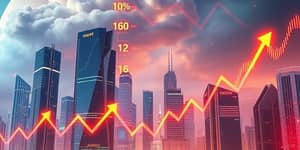
In early 2025, consumers and investors alike navigate a complex economic landscape shaped by persistent cost increases. Market participants demand actionable insights to understand and adapt.
As inflation remains elevated, individuals and institutions must find practical ways to respond. This article explores global trends, lived consumer impacts, policy measures, and market adaptations to rising prices.
After peaking near 9% in 2022 amid the pandemic and geopolitical conflicts, global inflation has eased but remains a pressing concern. For 2025, the world is expected to see an average rate of 4.0%, only marginally above the 3.9% recorded in late 2024. Forecasts suggest a slow decline to 3.9% in 2026 and 3.8% by 2028, underscoring persistent inflationary concerns globally.
Emerging markets saw inflation close to 10% during the 2022 peak, driven by supply disruptions and energy shocks. While developed economies have experienced a tempering effect, price levels remain well above pre-crisis norms, challenging central banks worldwide.
Consumers have felt the pinch on nearly every purchase. In the United States, the Consumer Price Index for all urban consumers (CPI-U) jumped 21.7% between February 2020 and November 2024. That far exceeds the 9.7% rise predicted under the Federal Reserve’s 2% target.
Transportation costs have surged the most since 2020, while education and communication expenses have climbed a more moderate 4.9%. As of May 2025, US CPI rose 2.4% year-over-year, and reached 3.0% for the 12 months ending January 2025.
For households, these trends translate into budget recalibrations, from cutting discretionary spending to seeking value in bulk purchases.
Despite higher prices, economic growth in the US has shown resilience. After three years of uninterrupted expansion, Q1 2025 saw a slight GDP contraction of -0.2% annualized, driven in part by surging imports ahead of tariff changes.
Real personal consumption expenditures remained positive, rising 1.2% annualized in Q1, though down from 4.0% the previous quarter. Durable goods purchases dipped 3.8% after pandemic-driven booms.
Looking forward, real consumer spending is forecast to grow 1.4% in 2025 and 1.5% in 2026. Yet consumer sentiment has wavered; a University of Michigan survey reported an 18.2% drop between December 2024 and June 2025, only to rebound when tariffs were temporarily paused.
These figures highlight a cautiously optimistic public that balances spending with saving for uncertainty.
A range of factors underpins current inflationary pressures. Supply chain disruptions—stemming from pandemic aftereffects and new geopolitical conflicts—constrain output. Trade tensions and tariff shifts fuel business stockpiling, further straining logistics.
Commodity and energy prices remain elevated, influenced by external conflicts and OPEC+ production decisions. On the demand side, expansive fiscal policies in many countries have kept money supply and consumption robust.
Central banks face the challenge of anchoring long-term inflation expectations without stifling growth. While many have raised policy rates significantly since 2021, recent signs of easing price momentum allow for cautious optimism on future rate hikes.
Volatility has been the hallmark of markets reacting to evolving inflation data and policy signals. Equity indexes fluctuate on announcements of tariff adjustments or higher-than-expected CPI readings.
Investors have adopted several strategies to navigate uncertainty:
On the consumer front, households lean into budgeting tools, value shopping, and delaying non-essential large purchases until price stability returns.
Amid these dynamics, stakeholders can take proactive steps:
By adopting these measures, individuals and organizations can build resilience against ongoing price pressures and position themselves for opportunities once inflation moderates.
Rising consumer prices and the resulting market reactions define the 2025 economic environment. While inflation has eased from its peak, it remains well above historical norms, affecting budgets, consumption patterns, and investment decisions.
Understanding global forecasts, unpacking key drivers, and implementing strategic financial responses will help navigate the months ahead. With vigilance and adaptability, both consumers and investors can turn inflationary challenges into a path toward more informed choices and long-term stability.
References













